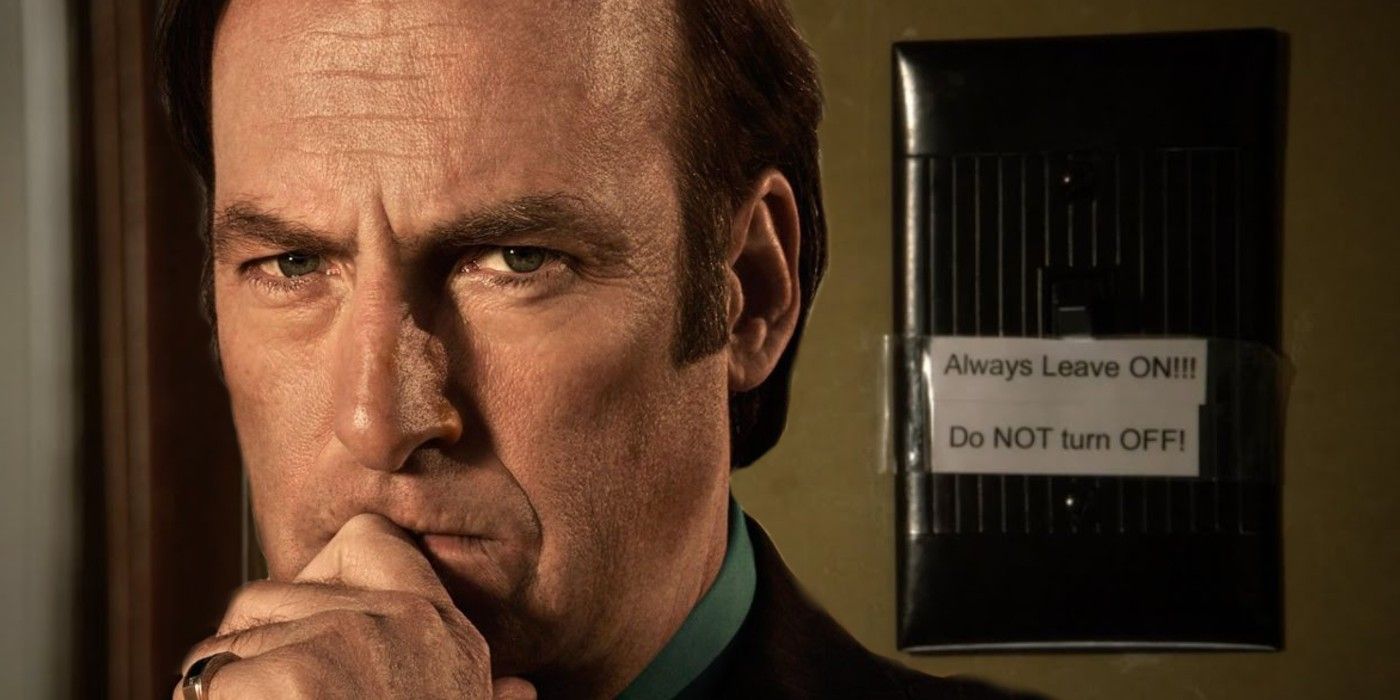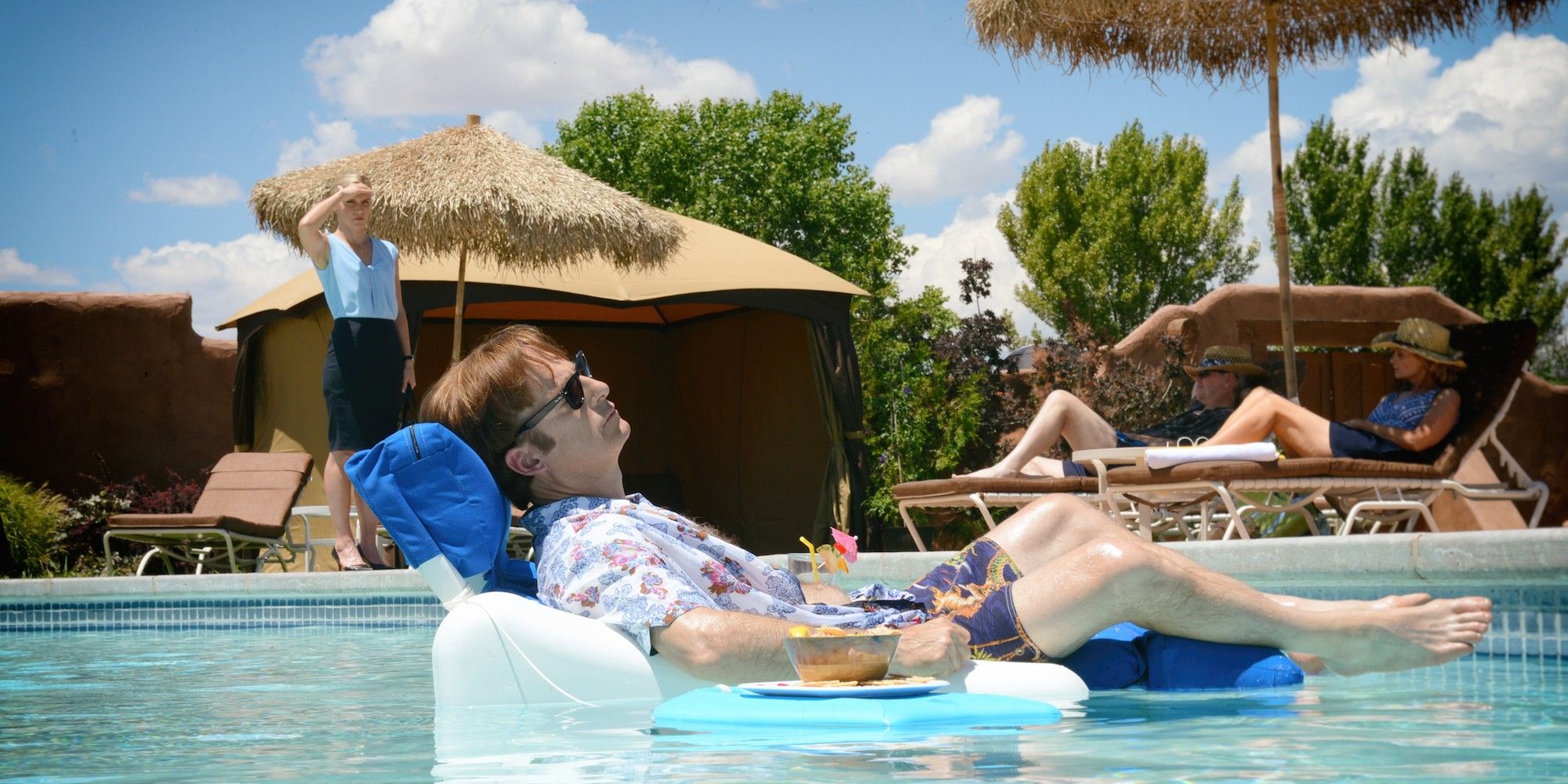What does Jimmy's flicking of a light switch mean in Better Call Saul season 2? Like it's predecessor, Vince Gilligan and Peter Gould's Better Call Saul is packed with visual metaphors, subtle foreshadowing and layered meanings. The spin-off adventures of Jimmy McGill also excel at revealing the thoughts and emotions of characters in innovative ways, rather than relying on dialogue like a regular series might. Better Call Saul season 5's finale offers a prime example, with Kim sarcastically stealing Jimmy's own catchphrase. Although she's not being serious, the moment highlights how Jimmy and Kim's positions have switched over the course of the season.
Another famous multi-layered scene, this time from Better Call Saul's earlier seasons, comes in the season 2 premiere. Appropriately titled "Switch," the episode finds Jimmy reflecting on his career path after being betrayed by Chuck and watching Marco die in the previous season. Jimmy has turned down a job offer from the reputable Davis & Main legal firm, and is spending his days lazing around at a swanky hotel pulling scams, much to Kim Wexler's annoyance. After being admonished by Kim and experiencing a moment of realization, Jimmy decides to accept the law job, and "Switch" ends with Jimmy acclimatizing to his roomy new office. The most telling scene comes right at the end, when Jimmy notices a light switch and a sign reading "Do NOT Switch OFF." Jimmy flicks the switch anyway, just to see what happens, and is a touch disappointed when nothing does.
Predictably, the light switch reveals a great deal about Jimmy's character at this point in the series, with several different layers of meaning attached. Most importantly, the scene continues the overall theme of rebellion in the episode. After being let down by Chuck and reliving his youth in Cicero, Jimmy adopts a carefree, almost punk-rock attitude of relying solely on instinct. He quits the law and decides to live for himself, instead of trying to impress his brother or fit around the strict world of practicing law. Though Jimmy ultimately escapes his existential crisis and accepts the Davis & Main job, flicking the light switch shows he hasn't entirely left those old habits behind. Now, Slippin' Jimmy just has to find smaller, less dramatic ways to rebel, like ignoring a sign in his workplace.
Another, completely separate, purpose of the light switch scene is to demonstrate Jimmy's self-destructive behavior - a defining characteristic of his from the very beginning. Most folks on their first day at the plush new job would be on their best behavior, but Jimmy deliberately defies a clear warning notice. Although the act is without consequence, Jimmy might've knocked the entire building's electricity out, and earned a first day rollicking from his new boss. It's almost as if he's trying to sabotage his new position. This is, of course, an example of Better Call Saul's exemplary foreshadowing, since Jimmy later works even harder to get himself fired.
As a third layer, the light switch moment represents Better Call Saul's ongoing battle between the Jimmy McGill and Saul Goodman personas. When "Switch" begins, Saul is firmly in the driving seat - the smooth-talking, free-wheeling drifter ordering expensive tequila and conning arrogant businessmen out of money. But during the episode's final sequence in the Davis & Main office, the (mostly) professional Jimmy McGill is back in business. The light switch, however, shows how easy the two personalities can flip - a visual metaphor promising the audience that Jimmy has no intention of leaving his Saul days behind.
In a wonderful piece of Better Call Saul symmetry, the final "Switch" scene contrasts beautifully with the first, in which Jimmy (as Gene in the future timeline) diligently follows the rules of his Cinnabon job. The former lawyer would rather toe the line in a career he's overqualified for than to make the most of his golden Davis & Main opportunity.


